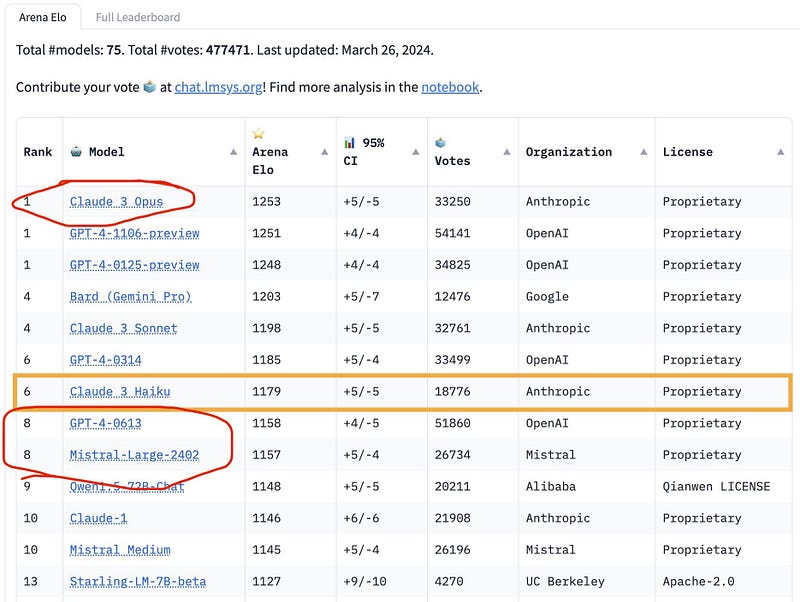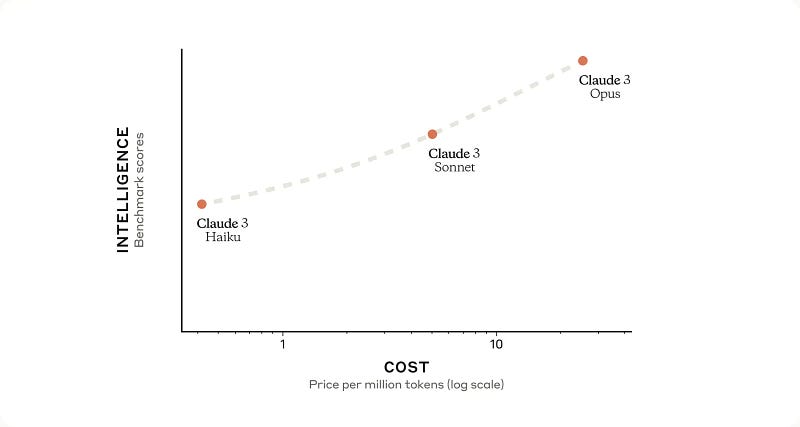The Rise of Claude 3: A Game Changer in AI Technology
Written on
Chapter 1: Introduction to Claude 3
On March 4th, 2024, Anthropic unveiled its latest achievement in artificial intelligence: the Claude 3 model family. This suite, which includes Claude 3 Haiku, Claude 3 Sonnet, and Claude 3 Opus, represents a significant leap forward in AI technology. Each model offers distinct levels of intelligence, speed, and cost-effectiveness, catering to diverse applications.

Section 1.1: The Challenges with GPT-4
Recent feedback suggests that ChatGPT, specifically the GPT-4 version, is losing its edge. Users have noted a decline in performance, leading to concerns about its reliability.
New impressions of Claude indicate a significant improvement in performance. The free-tier model, Sonnet, has been described as vastly superior to GPT-3.5, particularly in solving programming challenges. In contrast, assessing the performance of Opus against GPT-4 is more nuanced and requires further exploration.
Subsection 1.1.1: Claude 3 Models: A Leap Forward
Claude 3 Opus: The Pinnacle of AI Intelligence
Opus stands out as the most sophisticated model within the family, excelling in various benchmarks, including advanced mathematics and comprehension. Its proficiency in tackling complex tasks provides businesses with a powerful solution for intricate problem-solving.
Claude 3 Sonnet: A Balance of Speed and Intelligence
Designed for rapid responses, Sonnet operates at double the speed of earlier versions while delivering enhanced intelligence. This model is particularly well-suited for applications that require swift information retrieval and decision-making, such as sales automation.
Claude 3 Haiku: The Fastest and Most Cost-Effective
Expected to be released soon, Haiku is recognized for its remarkable speed and economical nature, capable of processing detailed research documents within seconds. This makes it ideal for applications needing immediate responses.

Section 1.2: Enhanced Features of Claude 3
The Claude 3 series boasts advanced vision capabilities that allow it to process various visual formats. This is particularly useful for enterprises dealing with diverse knowledge bases, including PDFs and flowcharts. Additionally, the new models show improved contextual understanding, which reduces unnecessary refusals to user requests.
Accuracy and Trustworthiness
Claude 3 has demonstrated notable accuracy improvements, especially with Opus, which has shown a twofold increase in correct responses to complex factual queries. The planned feature of providing citations will further enhance the models' credibility.
Long Context and Recall
The Claude 3 family offers an impressive context window of 200K tokens, with future expansions anticipated to exceed 1 million tokens for specific applications. Their exceptional recall abilities have been highlighted in evaluations like ‘Needle In A Haystack.’
Chapter 2: Advancements and Limitations
Despite Claude’s remarkable capabilities, it is not without its drawbacks. Unlike ChatGPT, it lacks a dedicated app, code interpreter, or sandbox environment, which may hinder developers. Furthermore, while the user interface is visually appealing, it falls short in features such as conversation path forks and overall user experience.
The cost of accessing Claude’s Opus model is another consideration, with a monthly fee of $20 adding to the existing subscription costs of various AI services, potentially deterring some users.
The first video titled "GPT-4 Makes Old ChatGPT Look Like a JOKE!" explores the comparative performance of GPT-4 and the new Claude 3 models, highlighting the transformative impact of this latest technology in the AI landscape.
The second video, "GPT-4 is here! What we know so far (Full Analysis)," provides a comprehensive analysis of GPT-4, juxtaposing it with the capabilities of Claude 3 and discussing the implications for the future of AI.
Concluding Thoughts
The launch of the Claude 3 family has dramatically altered the AI landscape. Anthropic’s advancements have set new benchmarks in AI capabilities, showcasing significant improvements over previous models, including GPT-3.5 and GPT-4. Users have highlighted Claude's exceptional performance in coding and understanding, with even the free-tier Sonnet surpassing GPT-3.5 in complex coding tasks.
Claude’s larger model, Opus, poses a formidable challenge to GPT-4, suggesting that OpenAI now faces serious competition in the AI arena. While GPT-4 and its predecessors laid a robust foundation, the arrival of models like Claude redefines the boundaries of AI innovation.
Sincerely,
The Pareto Investor
paretoinvestor.substack.com